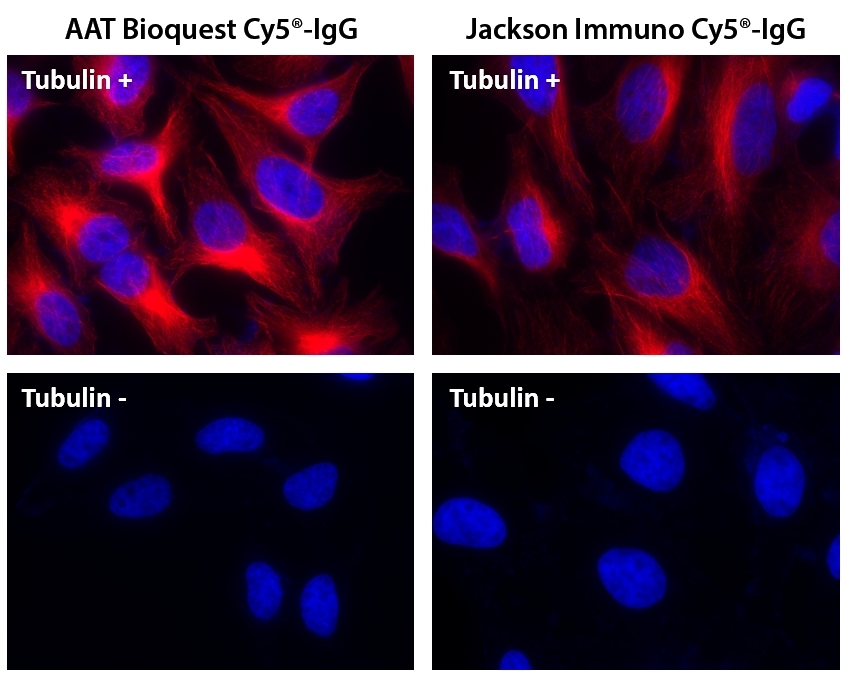ReadiLink™ Rapid Cy5 Antibody Labeling Kit
Microscale Optimized for Labeling 50 μg Antibody Per Reaction
Cy5 is one of the most popular fluorescent labeling dyes for preparing orange-red fluorescent bioconjugates. However, most of the commercial Cy5 labeling kits require intensive hands-on time. This Cy5 ReadiLink™ labeling kit is one of the most robust protein labeling kits for preparing Cy5-labeled antibody conjugates or other protein conjugates. It essentially only requires 2 simple mixing steps without a column purification required. The kit provides all the essential components for labeling ~2x50 ug antibody. Each of the two vials of Cy5 dye provided in the kit is optimized for labeling ~50 µg antibody. This Cy5 protein labeling kit provides a convenient method to label monoclonal, polyclonal antibodies or other proteins (>10 kDa).

Figure 1. Overview of the ReadiLink™ Rapid Antibody Labeling protocol. In just two simple steps, and with no purification necessary, covalently label microgram amounts of antibodies in under an hour.


| Catalog | Size | Price | Quantity |
|---|---|---|---|
| 1292 | 2 Labelings | Price |
Spectral properties
| Correction factor (260 nm) | 0.02 |
| Correction factor (280 nm) | 0.03 |
| Correction factor (482 nm) | 0.009 |
| Correction factor (565 nm) | 0.09 |
| Extinction coefficient (cm -1 M -1) | 250000 1 |
| Excitation (nm) | 651 |
| Emission (nm) | 670 |
| Quantum yield | 0.27 1 , 0.42 |
Storage, safety and handling
| H-phrase | H303, H313, H333 |
| Hazard symbol | XN |
| Intended use | Research Use Only (RUO) |
| R-phrase | R20, R21, R22 |
| UNSPSC | 12171501 |
Documents
Contact us
| Telephone | |
| Fax | |
| sales@aatbio.com | |
| International | See distributors |
| Bulk request | Inquire |
| Custom size | Inquire |
| Technical Support | Contact us |
| Request quotation | Request |
| Purchase order | Send to sales@aatbio.com |
| Shipping | Standard overnight for United States, inquire for international |
Page updated on December 14, 2025

